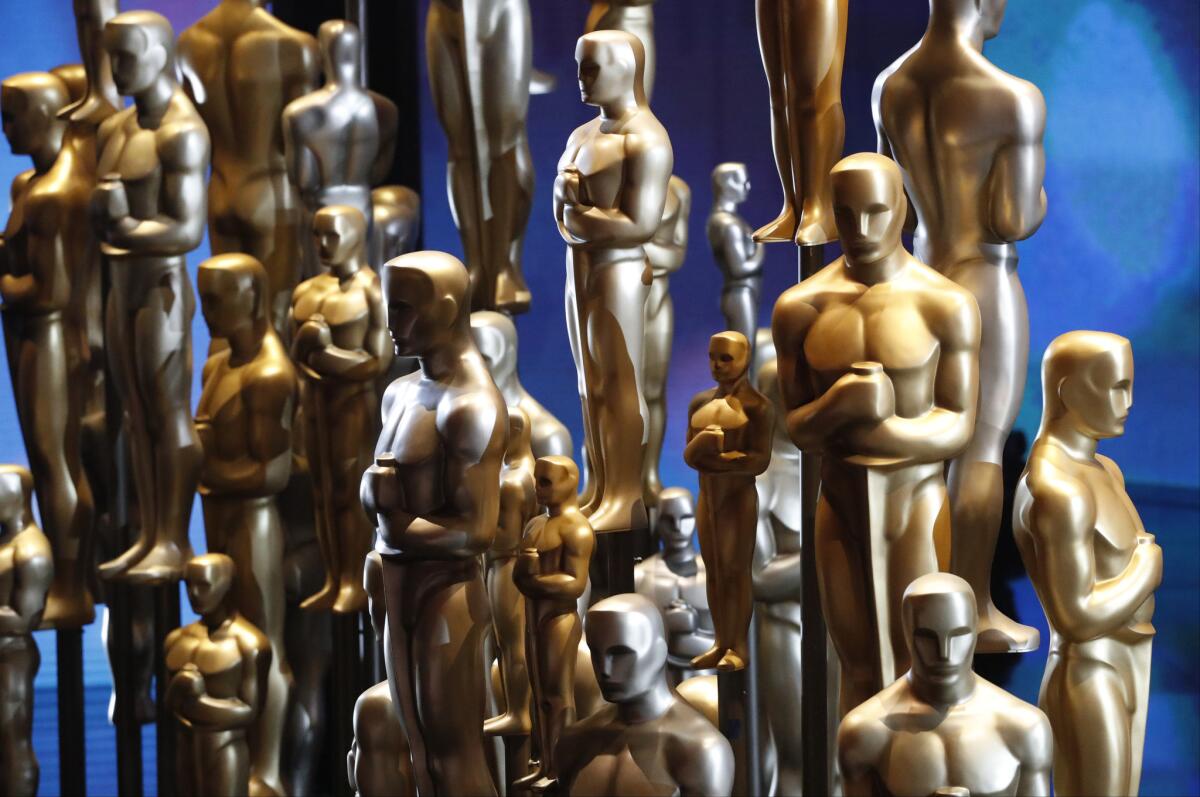How Richard Pryor and Eddie Murphy used the Oscars as a platform for diversity before #OscarsSoWhite

Oscar decor during the telecast of the 88th Academy Awards on Sunday, February 28, 2016 at the Dolby Theatre at Hollywood & Highland Center in Hollywood, CA.
- Share via
As established over the last few months of #OscarsSoWhite coverage and controversy, Hollywood diversity is an issue that inspires much passion within the entertainment industry and beyond.
But matters of diversity aren’t a trending topic, they’re a conversation that’s been going on for decades. Even in Hollywood. Even at the Oscars.
At the 49th Academy Awards held in 1977, 39 years ago, Richard Pryor (after a seven-minute interpretive song-and-dance number by Ann-Margret) opened the Oscars with a searing monologue that lampooned the lack of African American representation at the awards while a primarily white audience nervously tittered.
(Pryor’s remarks start at 7:40 below)
Pryor joked, “This show is going out to 75 million people. None of them are black. We don’t even know how to vote. There’s 3,349 people in the voting thing. And only two black people. Sidney Poitier and Harry Belafonte.”
In 1988, 11 years after Pryor’s monologue, the academy invited Eddie Murphy, one of the biggest box-office stars of the decade, to award the ceremony’s crown jewel, best picture. But before Murphy got down to business, he went off book and told the story of how he originally wanted to turn down the offer from the academy.
(Murphy’s remarks begin at 7:50 below)

Watch a timelapse of the red carpet with some of our signature photos slipped in.
Murphy said he told his manager, “I’m not going because they haven’t recognized black people in the motion picture industry.” He went on to detail the back-and-forth between him and his manager, even going so far as to quip, “I’ll probably never win an Oscar for saying this” (and he hasn’t) before ultimately saying, “Black people will not ride the caboose of society. We will not bring up the rear anymore and I want you to recognize us.”
Nearly 40 years after Pryor made cracks about the lack of black voters in the academy, the reality isn’t much more promising. In an update to the expansive study undertaken in 2012, the L.A.Times determined this year that the academy remains 91% white, diversifying just 3% in the last four years.
It’s an issue that academy President Cheryl Boone Isaacs and the board of governors are taking action on, announcing an initiative that aims to double the number of women and diverse members of the academy by 2020.
Hollywood’s diversity problems are nothing new, and the Oscars are merely another obvious representation of them, but this same conversation has existed for years with little traction. It’s clear that to make lasting change to the Hollywood landscape, it’s going to take less talk and more action.
Follow me @midwestspitfire
More to Read
The complete guide to home viewing
Get Screen Gab for everything about the TV shows and streaming movies everyone’s talking about.
You may occasionally receive promotional content from the Los Angeles Times.







